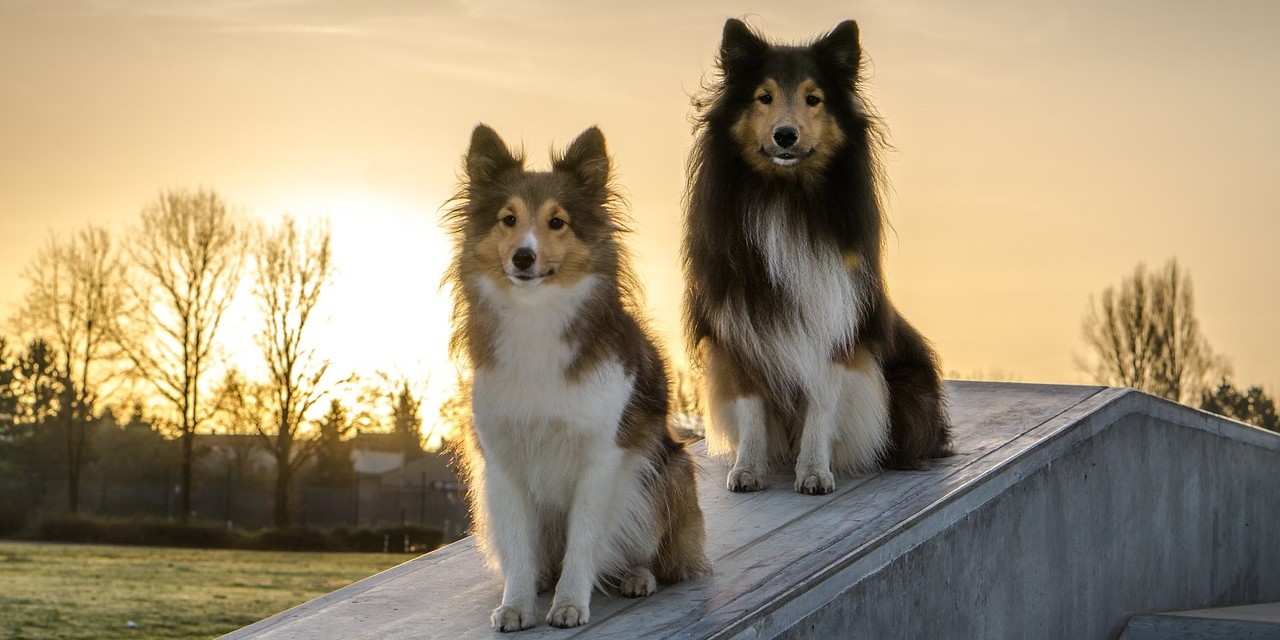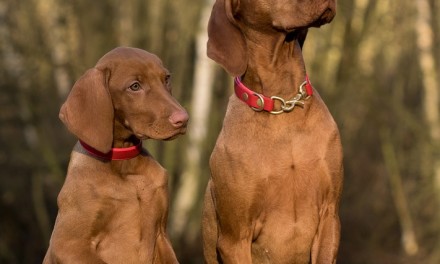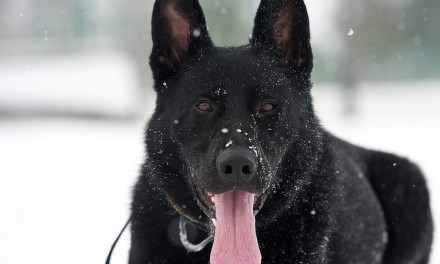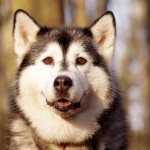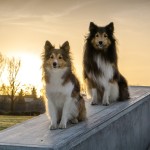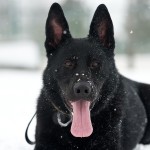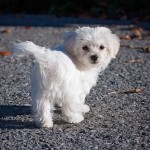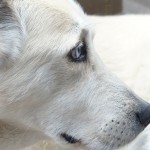by The Pawsitive Packleader, Inc.
An ethological approach to behavior and dominance in dogs
Perhaps the most commonly used adjective from dog owners when describing canine behavior is the word ‘dominant.’ Traditional understandings teach that the most primary motivator for a dog is to establish a social hierarchy where there is a clearly defined pack leader. This gives rise to the over-popularized idea that canine behavioral issues are a result of our dogs not having a strong leader and so they are acting out to fulfill that role. In light of the fact that there have been thousands of articles written on this topic both inside and outside of the scientific literature, I hope to present a different understanding of social dominance with a more modern evolutionary perspective to show how the desire to establish dominance with our dogs can damage our relationship more than solve behavioral issues.
Before examining the evolution of our dogs, we need to understand our own behavior first. Humans can be incredibly violent. We are frequently obsessed with dominance, control, and readily organize ourselves into hierarchies within our own various gregarious groups. Within my family, there was my father who was at the head of the table, then my mother beside him (sometimes) and his three boys who were ranked oldest, middle, and youngest. I was the middle, and as I became bigger and stronger than my older brother he began to avoid me and I became the closest to my father of all his sons (and perhaps even higher in rank if I wanted to go so far: my behavior had a greater degree of tolerance and I was given access to more resources—like his favorite sports car). I am generalizing but you can see in many ways how our own family has its particular hierarchal structure.
Even politics is nothing more than a system of social hierarchies. Governments with tyrannical despots have a very clear hierarchy and leaders often live their remaining life in power. Democracies—though more complex—are no different as well. We have the President, the Speaker of the House of Representatives, the Vice-President who runs the Senate but still stands below the President, and so on and so forth. Despite the numerous positions of political office, everyone knows our president is our leader.
Democracy is a complex system that allows the opportunity of “legally” removing our alpha from office—this is quite a sophisticated advancement of how our primate cousins do things. One study I point to was examining the effects of castration on testosterone in monkeys. During this study, they castrated the alpha male and measured his testosterone levels every day. After about 3 weeks, when his testosterone levels were almost depleted, his pack didn’t simply kick him out and elect a new alpha—they dismembered him and ripped him to pieces.
This is our primate ancestry that establishes pecking orders that frenzy into the organized chaos we call business. The idea is so hardwired in us that we rarely notice when we start applying it to other things, like dogs, cats, horses and other animals we live with. I had a friend in college who described his tortoise as an alpha-turtle because he bit him. One of the most absolutely critical things that we have to understand is that we cannot apply our primate pack mentality to our dogs (or other non-primate animals we live with). While there is no debate in the scientific community that many wolves and many dogs have a social pack structure, it is incredibly different from our primate understanding of social dominance. In order to separate the human social behavior from the canine it is necessary to understand canine behavior without the direct influence of human culture—to do this we have to examine our dogs’ wild canid cousin: the Eurasian Gray Wolf.
Our understanding of the wolf, as well as all animals, has dramatically improved in recent years. With growing knowledge and application of behavioral neuroscience and behavioral genetics, understanding many modern studies accurately is not as simple as making sure your dictionary is handy. Traditionally, the colloquial commentary on these studies portray a wolf pack as an extremely strict social hierarchy where wolves climb the social ladder through displays of aggression, fights, and asserting dominance.
The truth is that wolf packs are family and they do not always have a social hierarchy. Gray Wolves adopt and abandon social hierarchies depending on the prey that the pack is hunting and they do not utilize a social hierarchy just for the sake of it. Some of the factors that influence their social hierarchy include: the size of the prey, how food will be divided (much easier to divide up a bison or deer than a squirrel), and how large is the pack. What we see happening is that a wolf pack which is hunting moose or bison will have a very strict social hierarchy to be maximally effective while hunting such large prey and aid in dividing food afterwards without conflict, but if we look at a pack that is feasting on squirrels in a different area, they have absolutely no social hierarchy and researchers have a difficult time determining who is alpha. The most important thing to take away from this is that social dominance is extremely complex, is influenced by a number of variables, and is abandoned by wolves with no need for it.
Most importantly, and this is absolutely critical to understand, not only is the presence of a social hierarchy varying in canids, but we have almost completely bred out of modern European dogs the ability to read social dominant behavior. This was unintentional and a product of genetic linkage—the selection of one particular genetic characteristic that causes secondary changes. A great example of how this can happen with physical characteristics is with the Chinese Crested. An interesting phenomenon is that the hairless crested not only lacks hair, but often teeth as well. This is because the genes responsible for hair production is grouped with the genes responsible for teeth production—the result is hairless dogs with tongues hanging out of their mouths because they are missing teeth.
Similarly, we have behavioral characteristics caused by genetics. Up until a hundred years ago every dog had a job and that job was determined by breed. Terriers scavenged for rodents to kill; pointers pointed at birds, rushed, flushed and retrieved; herders herded; and so on and so forth. These behaviors are not only innate (a great herder has the instinct from birth) but they are so incredibly specific that they originally had a very low gene population. Thus in our quest to have dogs filling tremendously specific jobs we have created massive genetic linkage where we have abolished the genes responsible for reading social dominant behavior in the majority of dogs. Ultimately, we have now created dogs who have zero ability or requirement for a social hierarchy, so trying to use our primate pack mentalities to dominate them is not only useless towards its objective, but also damaging to our relationship because just like popular traditional trainers, primates use fear, pain and intimidation to punish behavior and establish social hierarchies.
However, not all dogs have had social dominance bred out of them, and these dogs are primarily the ancient breeds: Afghans, Salukis, Huskies, Malamutes, Akita Inus, Shiba Inus, Basenjis, Chow-chows, and Shar-peis. These dogs are genetically indistinguishable from wolves and thus have the ability to form social hierarchies. If these dogs form a defined social hierarchy with people (just like wolves, it is a tool of necessity), it is not because they think we are dogs but because it is their social language. We interact with dogs like they are humans because that is our social language (i.e. we hug, kiss and hold hands with our loved ones—I’m still waiting to see the pair of dogs holding paws walking down the street or sitting on a bench watching a sunset together) so it is no surprise that they interact back with their own species specific behaviors because they are, believe it or not, dogs. Another key factor to remember is that when we see hierarchy behavior emerge from some of these dogs, they almost never try to sit in an alpha or leadership position. Typically we see them slide into the very bottom of the pack. The only dogs that we see ever try to take on a presidential seat in a social hierarchy with humans are wolf-hybrids but even they typically only sit somewhere in the middle of the ranking because they lack thumbs to open their canned or bagged breakfast and dinner.
If you learn nothing else from this article, please read this carefully: for dogs that show a requirement for a well-defined social hierarchy, the route to creating it is as simple as making sure that every single piece of food comes from our pocket, not a food bowl. No alpha rolls, no confrontation. If there is confrontation between you and your dog then you are damaging your role as a leader. This is not a nothing-for-free-lifestyle (aka nothing in life is free) either which I vehemently argue is incredibly damaging to any social bond. This is purely hand feeding, either directly by feeding the dog by hand or tossing their food on the floor bit by bit.
Despite the vast differences in appearance and significant differences in behavior, humans are almost genetically identical to chimpanzees and dogs are almost genetically identical to grey wolves. With that said, if a psychiatrist or a psychologist is working with and helping a child in therapy, they would not treat the child as a chimp (even though both are primates). We cannot treat dogs like wolves because simply put—they are just not wolves (thank heavens! Watch some food acquisition behavior in wolves and then decide if you want that in your elegant kitchen or dining room). We can learn a lot about dogs by understanding the origins of their social relationships but it has to be modified with what we have learned about dogs specifically. Dogs have been discriminating themselves from wolves as an individual species for over 100,000 years and must be treated like dogs.
Because of the fear that calling dogs packing animals will perpetuate our misconceptions of dominance, an extremely vast population of dog trainers dismiss and argue that dogs do not form packs. A pack is by definition a gregarious group of animals living and hunting together. Wolves—just like dogs—sometimes do not form social hierarchies while others do; yet, we still call their gregarious behavior packing. We don’t distinguish, “well those wolves are hunting bison so they are a wolf pack but those wolves are eating squirrels so they are a wolf family.” Dog trainers who are passionately arguing that dogs do not pack have truly thrown the baby out with the bathwater.
So, how do you become the pack leader? Think back to some truly inspirational teachers you had in your life. Think about how they commanded your attention and your respect without forcing you to the ground in an alpha roll, yelling at you, kicking you in the side, or eating a sandwich before you were allowed to leave for lunch. They taught you. They inspired you with new concepts and it filled you with confidence. This is how we become a true leader. We must improve our communication through training; we must build our dog’s confidence in positive ways; we must make our punishments gentle, fair, and effective; we must become consistent and predictable; and above all things we must always respect our dog’s needs.
This is the only path to becoming a true pack leader.

